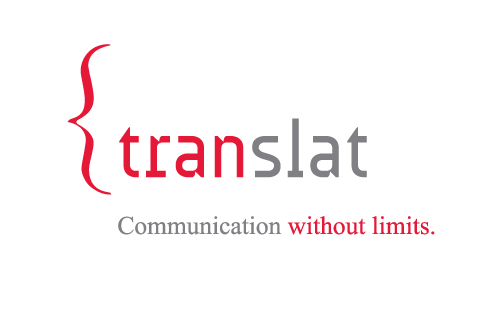The Hidden Cost of Technological Misalignment
Imagine this: you’re managing a multimillion-euro localization program for a global pharma client. Timelines are tight, regulations unforgiving. Yet a smaller supplier in your chain fails to upload files correctly because their CAT tool isn’t fully compatible with your TMS. Suddenly, your PMs are firefighting, deadlines slip, and your client’s trust is on the line.
Scenarios like this are all too common in the translation industry. Research across localization and project management consistently highlights communication silos, tool incompatibility, and weak security protocols as leading causes of project delays and cost overruns. In one Copenhagen Business School study, cloud-based CAT tools were shown to cut inefficiencies and improve visibility in distributed teams.
For global LSPs, the message is clear: supplier compatibility isn’t a nice-to-have. It’s business-critical.
This blog explores:
- The five pitfalls that most often sink partnerships with smaller LSP suppliers.
- Real-world scenarios showing how these issues unfold.
- How Translat is structured to eliminate these risks and integrate seamlessly with global LSP workflows.
What Is LSP Technological Compatibility?
Technological compatibility means suppliers don’t just deliver words. They deliver work that flows directly into another LSP’s ecosystem without creating bottlenecks.
This includes:
- TMS and CAT integration to prevent manual workarounds.
- Shared dashboards and transparent workflows for visibility.
- Standardized documentation and SOPs for smooth onboarding.
- Mirrored security standards to protect sensitive content.
Without this, projects stall, errors multiply, and client trust erodes, jeopardizing LSP’s reputation.
The 5 Pitfalls That Sink Supplier Relationships
1. Silence in the System: Communication Gaps
Suppliers relying on email chains and FTP handoffs create black holes in project visibility.
Illustrative Scenario: A regional supplier misses multiple client updates because they weren’t connected to the main TMS. The result? Rework, missed deadlines, and eventually replacement.
2. Manual Pain: Outdated Tools Block Automation
Global LSPs run on automated workflows. When suppliers can’t integrate APIs or use incompatible CAT tools, manual handling creeps in. Errors follow.
Illustrative Scenario: A life sciences project stalls when a supplier delivers files outside the required workflow. Another supplier, fully integrated into the cloud TMS, is able to deliver probably 30% faster and win the work.
3. The Fog of Incomplete Documentation
Unclear documentation or ad-hoc processes during onboarding of an LSP supplier lead to weeks of wasted time.
Illustrative Scenario: An LSP supplier struggles with file filter setup because they lack standardized onboarding guides. Delays ripple through the chain until the global LSP replaces them with a partner who has clear SOPs.
4. Security Gaps That Break Trust
For regulated industries, security is non-negotiable. One weak LSP supplier can compromise the entire chain.
Illustrative Scenario: A boutique legal supplier loses access to a global LSP’s client portfolio after failing an ISO 27001 compliance check, even though their linguistic quality has been excellent.
5. Different Goals, Different Results: Quality Misalignment
Speed versus polish. Volume versus consistency. Without shared definitions of “quality,” partnerships falter.
Illustrative Scenario: Two suppliers deliver software UI content. One focuses on stylistic perfection, the other on consistency with terminology and speed. Only the latter aligns with the client’s KPIs and keeps the contract.
The consequences of these pitfalls are more than just delayed projects. They create a ripple effect, multiplying costs, eroding client trust, and ultimately jeopardizing your profitability and reputation. For a global LSP, a single point of failure in the supply chain can put a multimillion-euro program at risk. Overlooking supplier compatibility isn’t an option; it’s a direct threat to the business.
The Roadmap: How Can Technological Compatibility Improve
Step 1: Take Stock — Tech Audit Readiness
- Suppliers must align CAT, TMS, and QA tools with your ecosystem.
Step 2: Cloud Integration — Scale Without Friction
- Cloud-based TMS platforms ensure real-time collaboration and scalability.
Step 3: Standardized Documentation — No Guesswork
- Integration playbooks and SOPs speed up onboarding and reduce errors.
Step 4: Security Proof — Beyond Checkboxes
- Suppliers need ISO 17100 and 27001 certifications or at least organize their processes to be compliant with the standards, VPNs, and encryption in place.
Step 5: Trained People, Not Just Tools
- PMs and linguists must be fluent in client-preferred platforms and protocols.
Step 6: KPI Alignment — Defining Quality Together
- Clear, shared QA frameworks like MQM or LISA avoid endless disputes.
Step 7: Escalation Protocols — Crisis Without Chaos
- SLAs and escalation contacts must be defined before projects go live.
Looking Ahead: Next-Gen Compatibility
The challenge is no longer just file formats. Global LSPs now expect partners who can:
- Plug into AI-enabled MT workflows with adaptive engines.
- Use predictive QA tools to flag errors before delivery.
- Provide analytics dashboards for real-time reporting.
The LSP suppliers who embrace these capabilities won’t just deliver translations. They’ll protect the client relationship by removing risk from the supply chain.
How Translat helps global LSPs
For global LSPs, the pain is familiar: smaller LSP suppliers who delay projects, compromise security, or create rework. Every weak link threatens client satisfaction and profitability.
That’s why Translat has built its operations around compatibility, security, and alignment. With scalable technology, strict compliance, and seamless workflow integration, we act not as a liability but as a safe extension of your global supply chain.
Work with us
If you’re a global LSP looking for a reliable partner in Central and Eastern Europe for legal, medtech, finech and pharma translations, Translat is ready to integrate seamlessly into your workflows.
Contact us at info@translat.si to discuss how we can strengthen your supplier base and deliver projects without friction.

